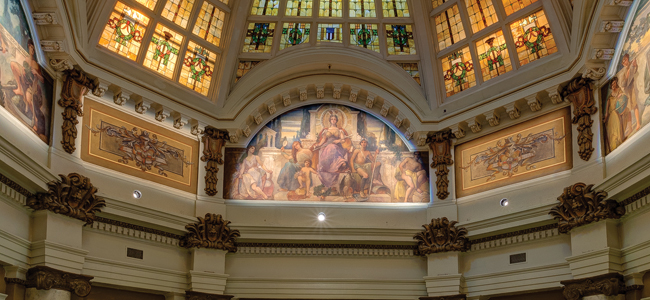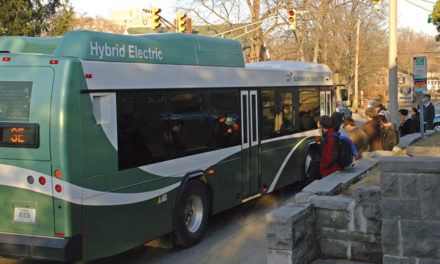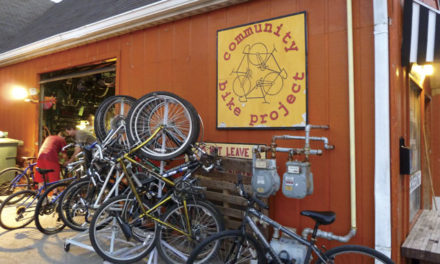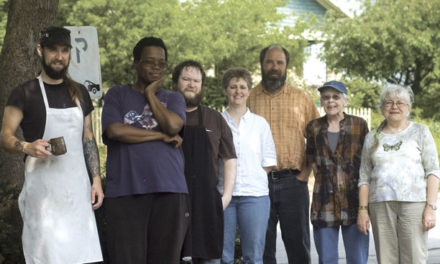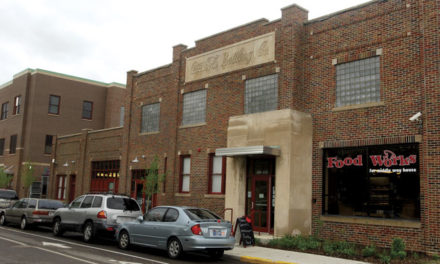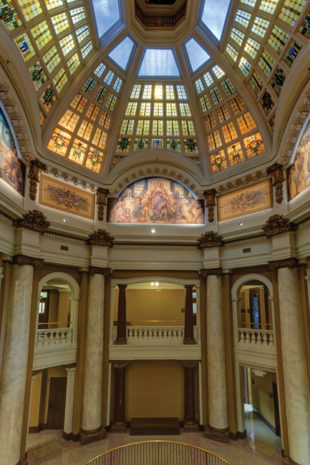
Lady Justice in the courthouse rotunda. Photo by James Kellar
BY JEREMY SHERE
Last summer, when former Indiana University French instructor Constance Ecklund was in town, she visited the Monroe County Courthouse and happened to look up, noticing the murals decorating the rotunda.
“I had been searching for a one-of-a-kind image to begin Volume I,” says Ecklund, referring to her late husband John Ecklund’s two-volume scholarly work The Origins of Western Law from Athens to the Code Napoleon (Talbot Publishing, 2014), which she edited. “Right away I knew this [the mural depicting Lady Justice] was it.”
The murals, 10 in all, were created in 1907-08 by German artist Gustav Brand, celebrated for his murals displayed in the German Building during the World’s Columbian Exposition of 1893 in Chicago. The four main oil-on-canvas murals on the courthouse rotunda, each 8 feet by 16 feet, depict the local limestone mining and carving industries, agriculture, education, and justice. The Lady Justice mural that caught Ecklund’s eye features the “goddess of justice” holding a sword of righteousness in one hand and a wreath of peace and glory in the other.
In 1962, when the courthouse was remodeled, a floor was placed across the rotunda to turn the space into a courtroom, rendering the murals visible only to people who had business in court. When the courthouse was renovated again in 1983, the added floor was removed as were the murals, which had been badly damaged by cigarette smoke, dirt, and water leaking through the roof. Although the building was officially rededicated in 1984, the murals were kept in storage until 1992, when funds became available to hire Conrad Schmitt Studios in New Berlin, Wisconsin, to restore Brand’s work.
“These beautifully restored art works make for Bloomington nothing less than a wonderful, unique book of Indiana genealogy that can be read pictorially as defining the state’s citizenry,” says Ecklund, who taught at IU in the late 1960s and currently lives in Connecticut.
Charlotte Zietlow, who was a county commissioner during the 1984 courthouse rededication, is also a fan of the murals. “I like that period of art from the early 20th century, with its Germanic touches,” she says. “The murals are very nicely rendered and worthy of the courthouse.”


